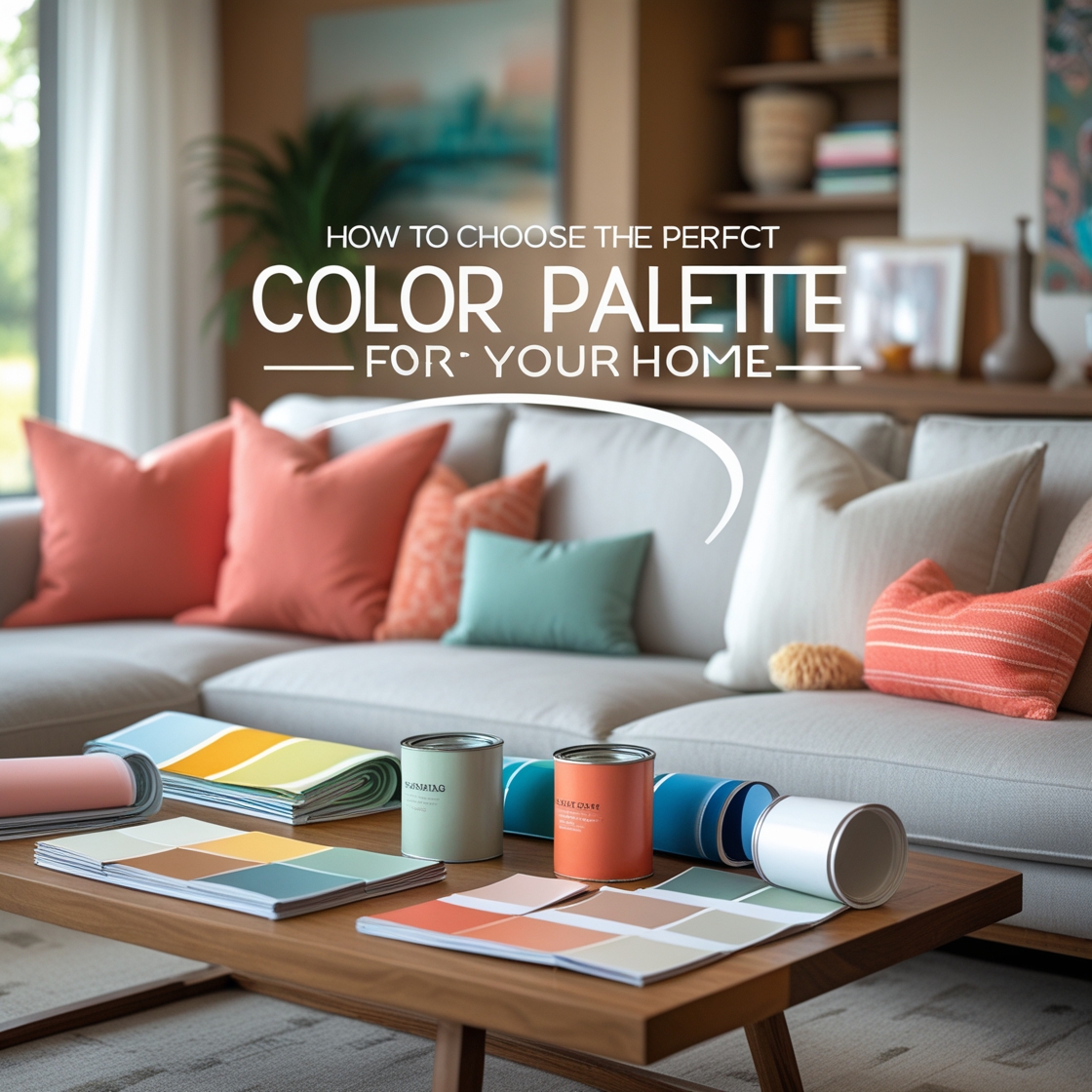Choosing the perfect color palette for your home is one of the most exciting yet challenging parts of interior design. Colors have the power to transform a space, influence your mood, and reflect your personality. Whether you’re redecorating a single room or your entire house, this guide will walk you through every step of the process. By the end, you’ll have all the tools and knowledge you need to create a color palette that’s both beautiful and functional. Let’s dive in!
I. Understanding the Psychology of Color
How Color Impacts Mood and Atmosphere
Colors aren’t just pretty to look at—they can affect how you feel! Each color has its own psychological impact, and understanding this can help you create the right atmosphere in your home. Here’s a breakdown of common colors and their effects:
- Blue: Calming and serene, perfect for bedrooms or bathrooms where you want to relax.
- Yellow: Cheerful and energizing, great for kitchens or home offices where you need a boost of positivity.
- Red: Bold and stimulating, ideal for dining rooms where you want to spark conversation and appetite.
- Green: Refreshing and relaxing, often used in living rooms or spaces where you want to feel at ease.
- Neutrals (White, Gray, Beige): Versatile and timeless, they create a clean, balanced backdrop for any room.
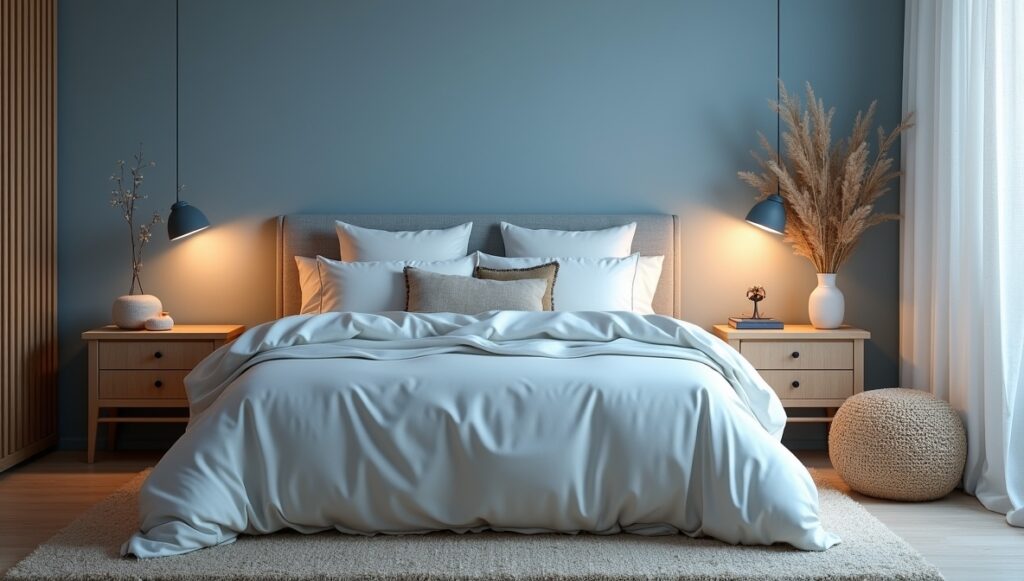
Recognizing Personal Color Preferences
Everyone has colors they naturally gravitate toward. Think about the colors you love to wear, the ones that make you feel happy, or even the shades you’re drawn to in nature. These preferences can guide your choices. For example, if you adore soft pastels, you might lean toward a light lavender or mint green for your walls. If you love bold, vibrant hues, consider incorporating jewel tones like emerald green or sapphire blue.

Matching Color Psychology to Room Function
Each room in your home serves a different purpose, and the colors you choose should reflect that. Here’s how to match colors to room functions:
- Bedrooms: Should feel restful and calming. Consider soothing colors like soft blues, greens, or neutrals.
- Kitchens: Benefit from bright, energizing colors like yellows or warm whites to create a lively atmosphere.
- Living Rooms: Can be versatile, but cozy tones like warm grays or earthy greens work well for a welcoming feel.
- Bathrooms: Often feel fresh and clean with light blues, greens, or crisp whites.
- Home Offices: Need focus and energy, so consider shades of blue, green, or even a muted orange.

II. Foundational Elements: Setting the Stage
Analyzing Existing Home Elements
Before picking colors, take a look at what’s already in your home. Your flooring, furniture, and fixed features (like cabinets or countertops) will influence your palette. For example:
- If you have dark wood floors, you might want to balance them with lighter wall colors.
- If your furniture is neutral, you can add pops of color with accessories or accent walls.
- If you have colorful artwork or rugs, use those as inspiration for your palette.
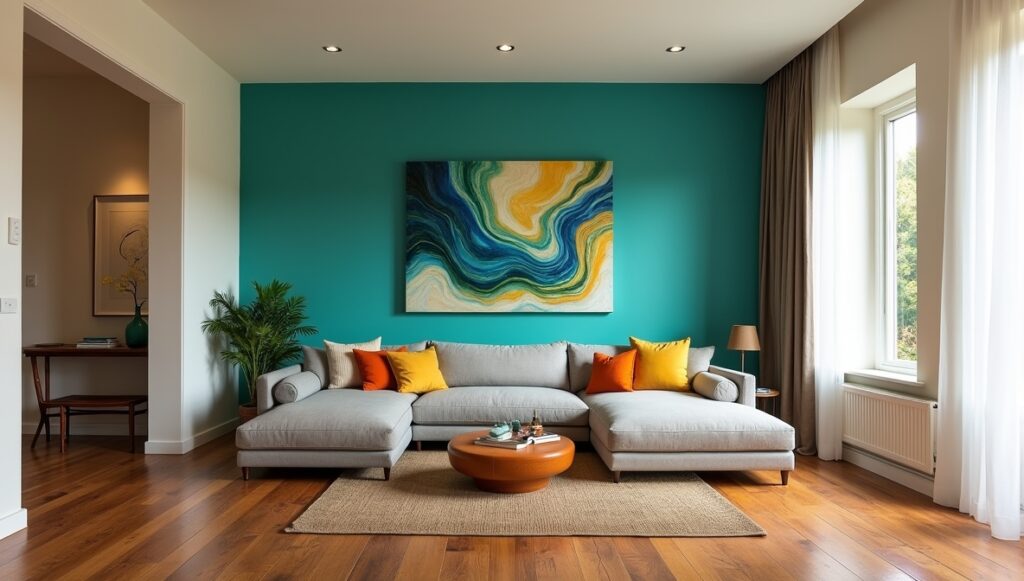
Considering Natural and Artificial Lighting
Lighting can dramatically change how colors look in your home. Here’s what to keep in mind:
- Natural Light: Shows the truest color and makes rooms feel brighter. North-facing rooms tend to have cooler light, while south-facing rooms have warmer light.
- Artificial Light: Can make colors appear warmer or cooler depending on the type of bulb. Test your colors under both natural and artificial light to see how they change throughout the day.
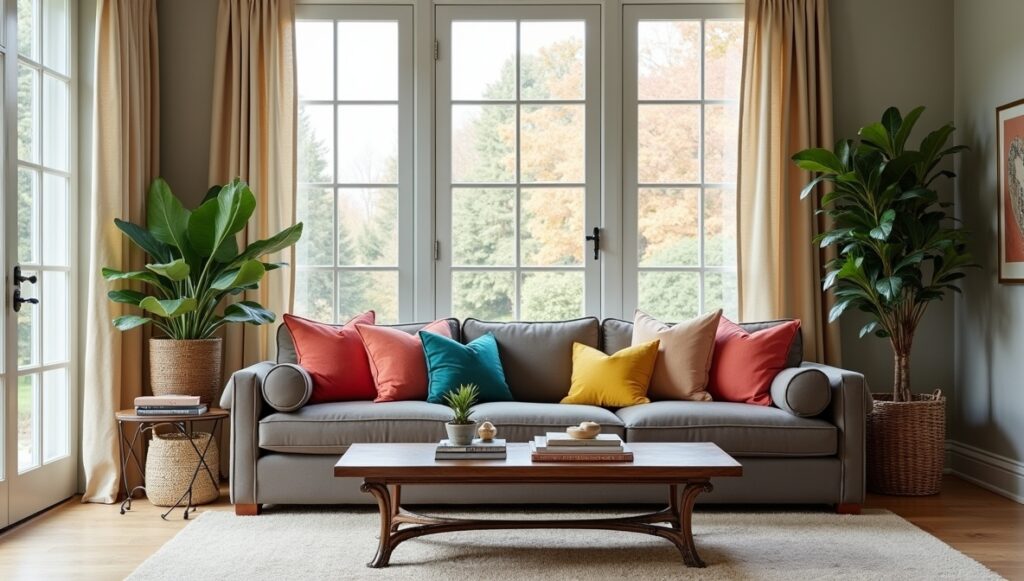
Defining Your Personal Style
Your home should reflect your personality and taste. Ask yourself:
- Do you prefer modern, minimalist designs with clean lines and neutral tones?
- Are you drawn to cozy, rustic vibes with earthy colors and natural textures?
- Do you love bold, eclectic styles with vibrant colors and patterns?
Knowing your style will help you narrow down your color choices and create a cohesive look.
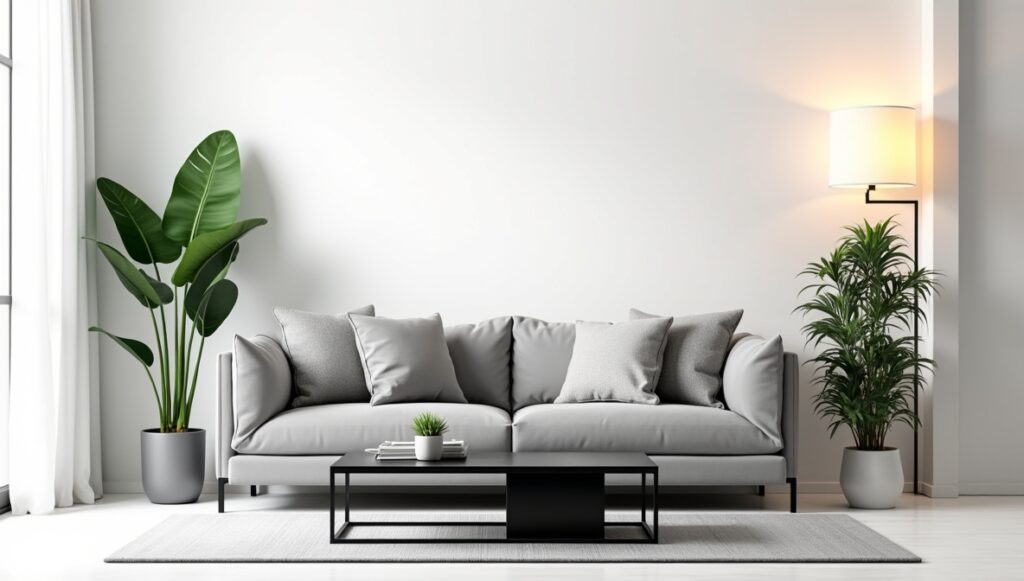
III. Mastering Color Theory for Home Design
A Deep Dive into the Color Wheel
The color wheel is your best friend when it comes to choosing colors. Here’s how it works:
- Primary Colors: Red, blue, and yellow—the building blocks of all other colors.
- Secondary Colors: Green, orange, and purple—created by mixing primary colors.
- Tertiary Colors: Colors like red-orange or blue-green, made by mixing primary and secondary colors.
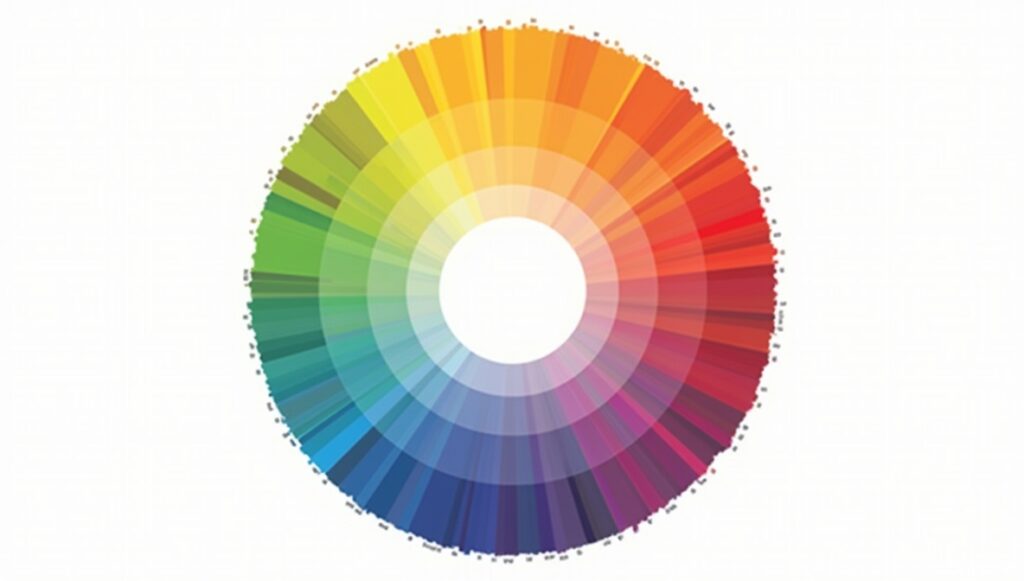
Understanding Color Schemes
- Analogous Colors: Colors next to each other on the wheel (like blue, blue-green, and green). These create a harmonious look.
- Complementary Colors: Colors opposite each other on the wheel (like blue and orange). These add contrast and energy.
- Triad Colors: Three colors evenly spaced on the wheel (like red, yellow, and blue). These create a balanced yet vibrant palette.
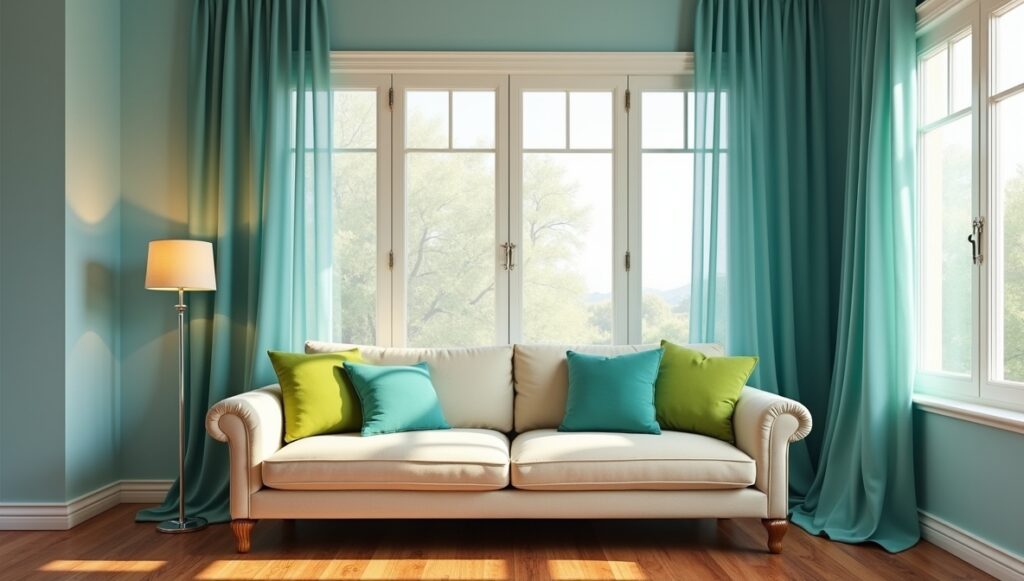
The Importance of Undertones
Colors have undertones—subtle hints of other colors that affect how they look. For example:
- A gray might have a blue, green, or purple undertone.
- A beige might have a pink, yellow, or green undertone.
Pay attention to these, as they can make or break your palette. Always test colors in your home to see how they interact with your lighting and existing elements.
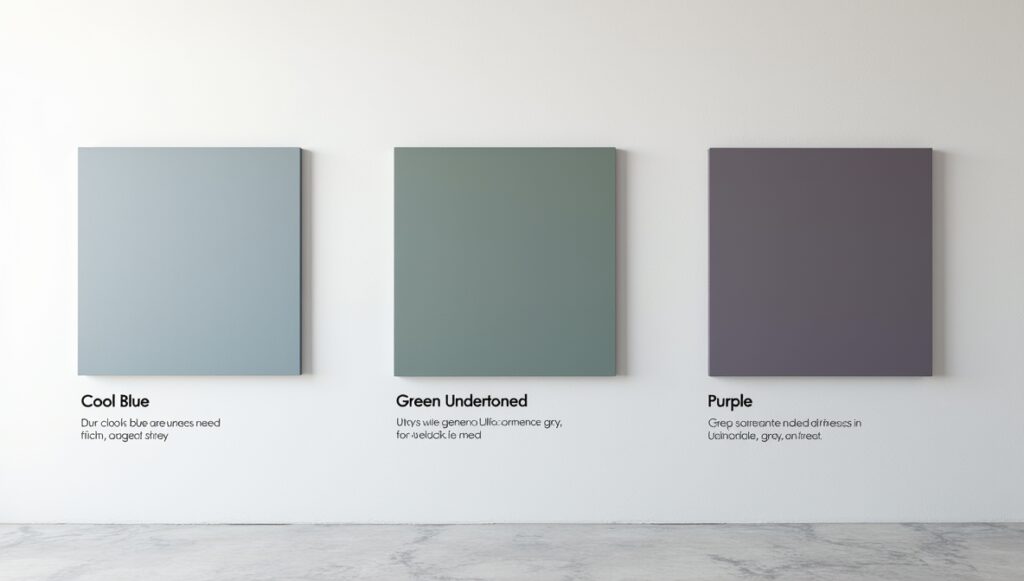
IV. Practical Application: Building Your Palette
The 60-30-10 Rule
This is a simple formula for balancing colors in a room:
- 60%: Your main color (usually the walls).
- 30%: Your secondary color (often furniture or curtains).
- 10%: Your accent color (like throw pillows or artwork).
For example, in a living room, you might have 60% light gray walls, 30% navy blue furniture, and 10% yellow accents.

Whole-House vs. Room-Specific Palettes
Decide if you want a cohesive look throughout your home or unique palettes for each room. For a cohesive look, stick to a consistent set of colors but vary their intensity or placement. For example, you might use shades of blue and gray throughout your home but use darker tones in the living room and lighter tones in the bedrooms.

Finding Inspiration
Look to nature, art, or even your favorite travel destinations for color ideas. You can also use digital tools like Adobe Color or Coolors to create and test palettes.

Creating Color Boards
Gather paint swatches, fabric samples, and photos to create a physical or digital color board. This helps you visualize how everything will look together and ensures your colors complement each other.

V. Avoiding Common Color Palette Mistakes
Overlooking Lighting
Always test your colors in the actual room, as lighting can drastically change how they appear. A color that looks perfect in the store might look completely different in your home.
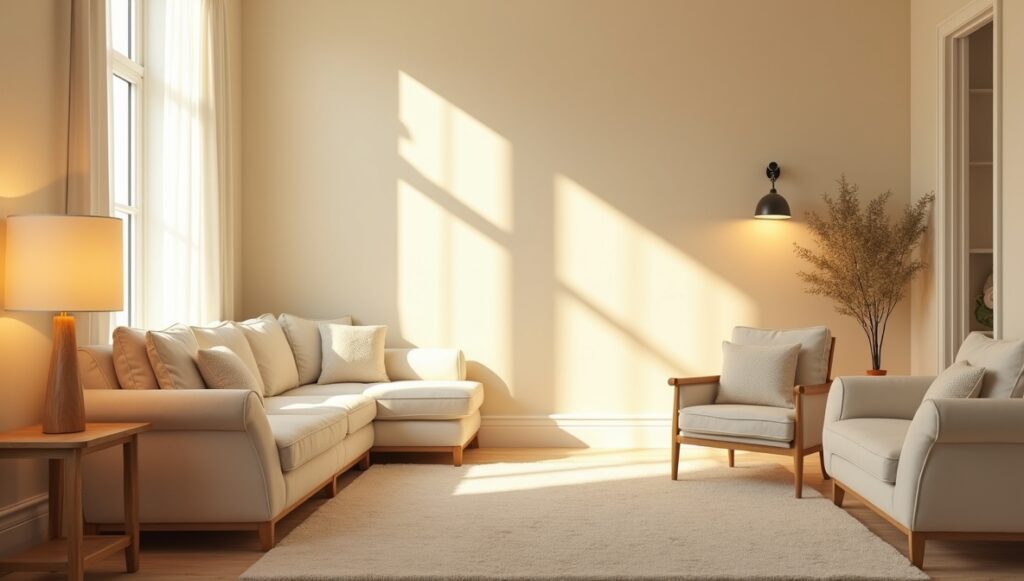
Ignoring Flow Between Rooms
If your rooms are open to each other, make sure the colors complement one another. You don’t want clashing palettes!
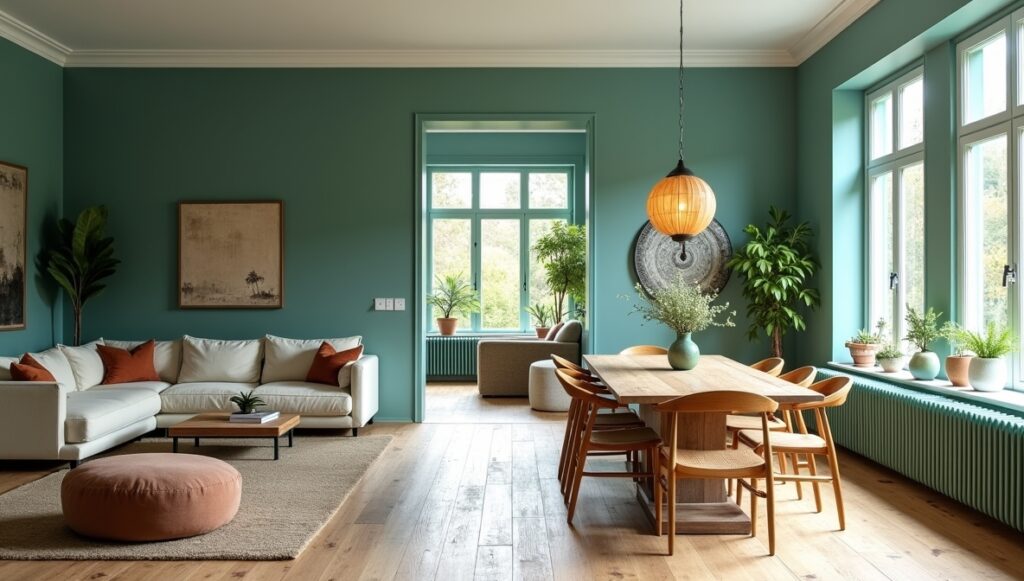
Falling Victim to Trends
While it’s fun to try trendy colors, make sure they’re something you’ll love for years to come. Trends come and go, but your home should reflect your personal style.

Skipping Paint Samples
Never skip testing paint samples on your walls. Paint small sections and observe them at different times of the day to see how the color changes with light.
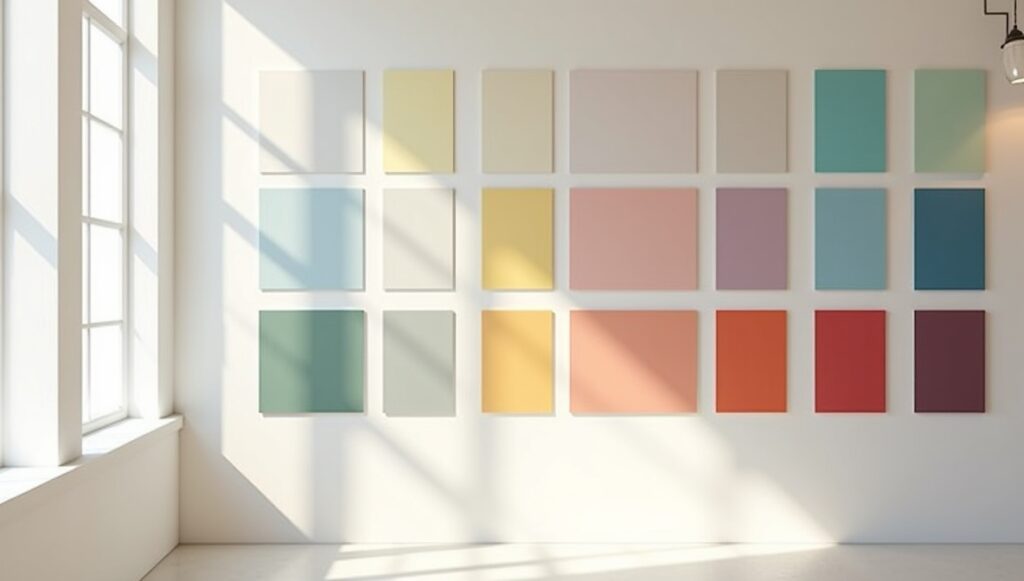
VI. Refining and Implementing Your Color Palette
Testing Colors in Different Lighting
Paint small sections of your wall and observe them at different times of the day. This will help you see how the color changes with light.
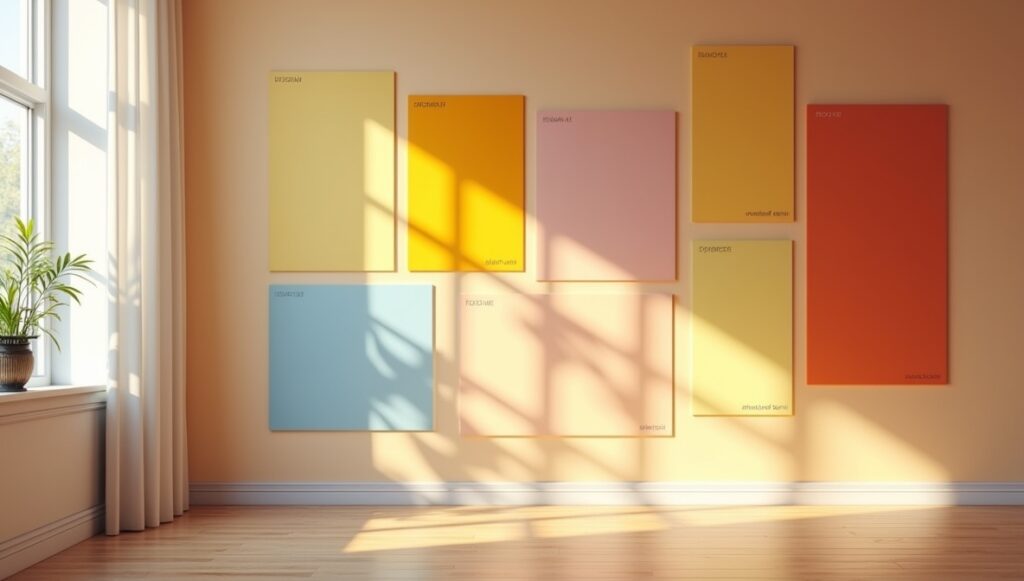
Using Accent Colors
Accent colors add depth and interest. Use them in small doses—like a bright yellow vase or a colorful piece of art.
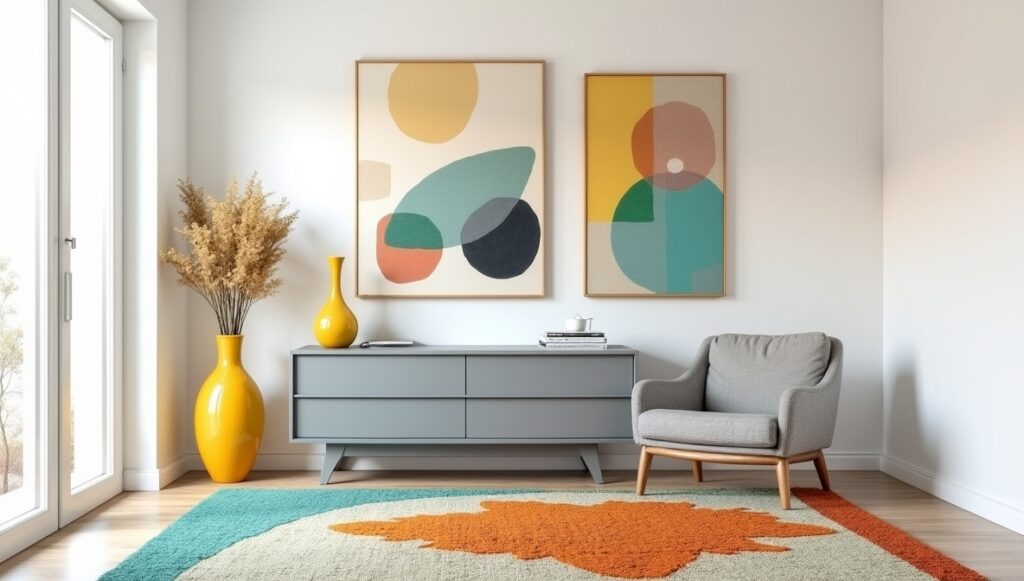
Choosing Paint Finishes
- Matte: Hides imperfections but is harder to clean.
- Satin: Easy to clean and great for high-traffic areas.
- Gloss: Reflective and perfect for trim or doors.
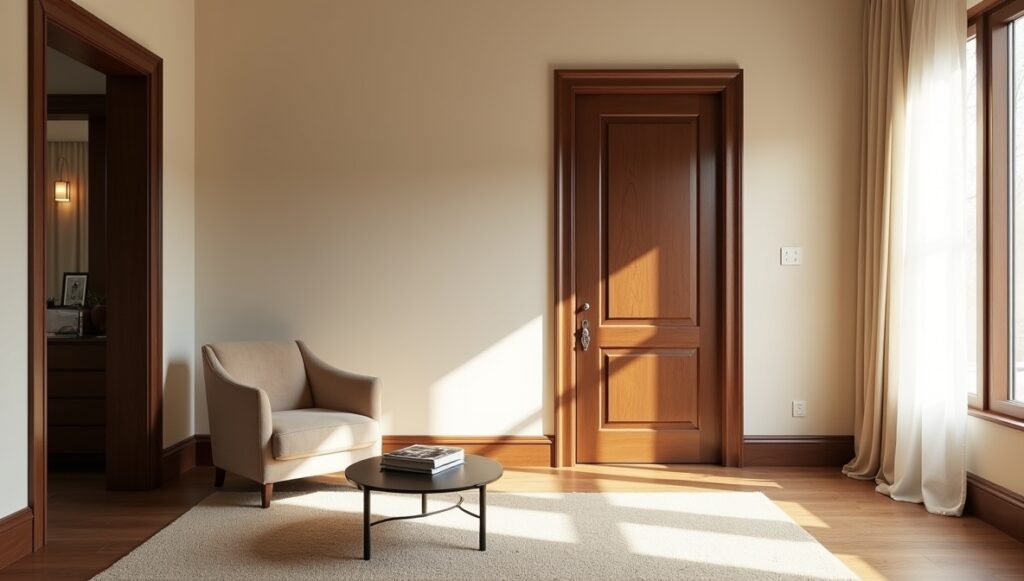
Incorporating Textiles and Accessories
Once your walls are painted, bring in textiles (like rugs and curtains) and accessories (like pillows and artwork) to complete the look.
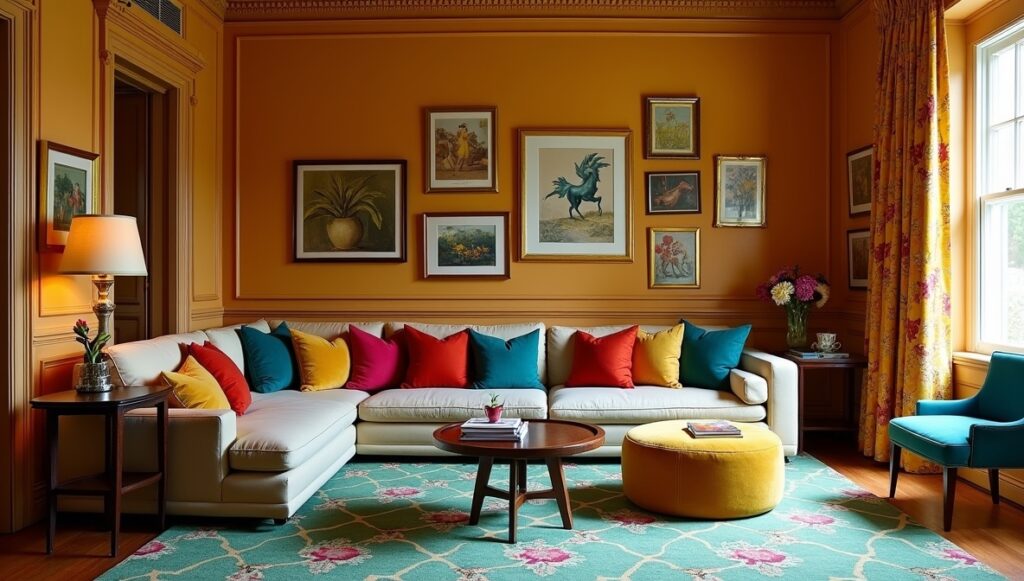
VII. Color Palettes for Specific Home Styles
Modern/Minimalist
Stick to neutral tones like white, gray, and black, with pops of bold color for contrast.

Traditional/Classic
Think rich, warm colors like deep reds, greens, and golds, paired with creamy neutrals.
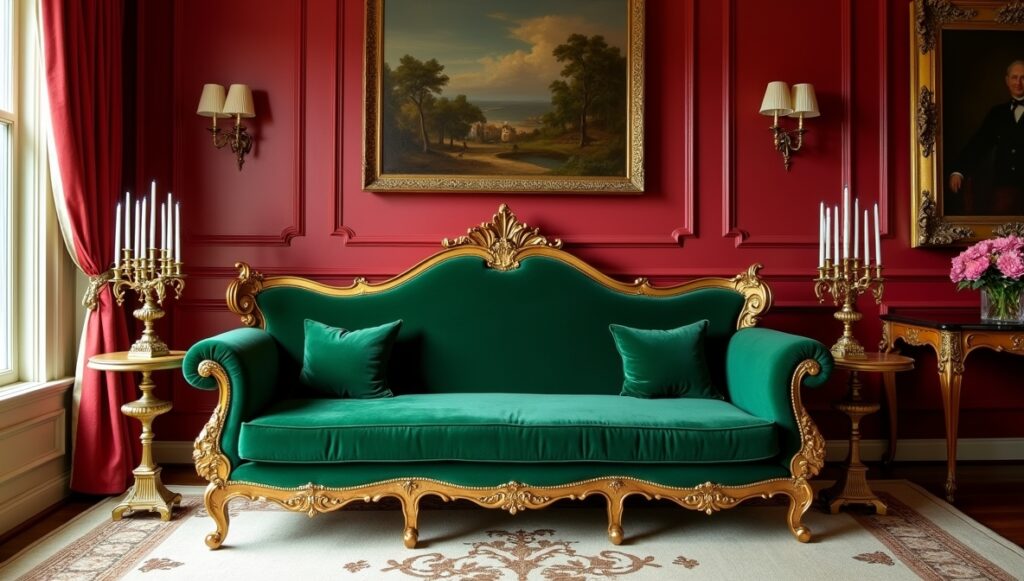
Bohemian/Eclectic
Go bold with vibrant colors like turquoise, orange, and pink, mixed with earthy tones.
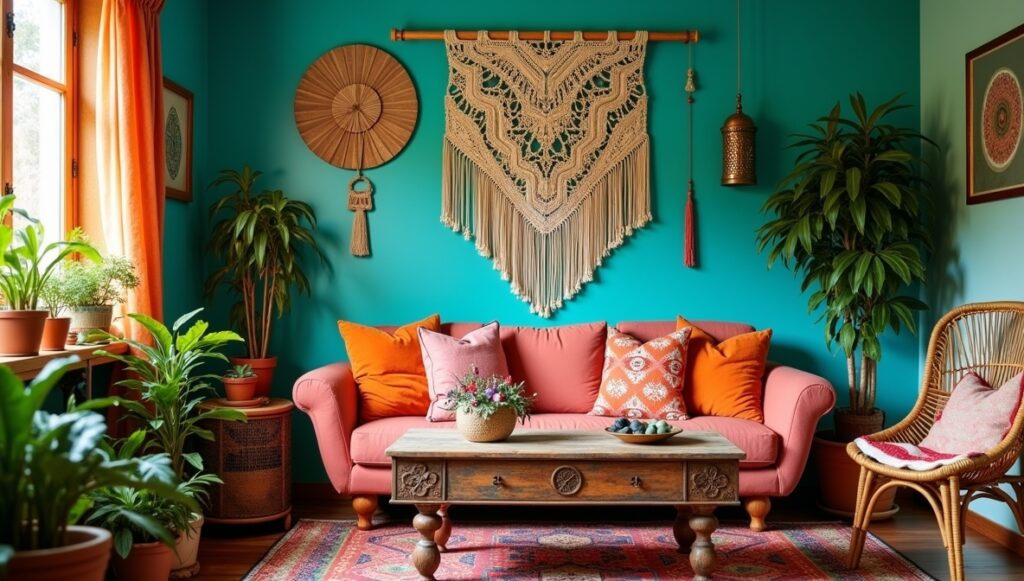
Coastal/Rustic
Use soft blues, whites, and sandy beiges to create a relaxed, beachy vibe.

VIII. Expert Tips and Tricks
Creating Spaciousness with Color
Light colors make a room feel bigger, while dark colors make it feel cozier. Use this to your advantage!
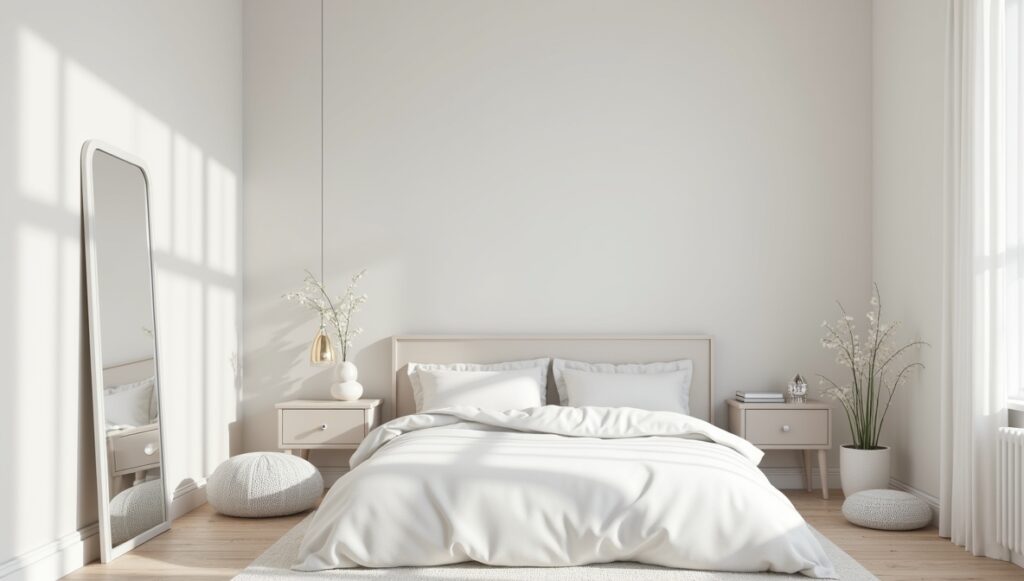
Highlighting Architectural Features
Use accent colors to draw attention to features like fireplaces, moldings, or built-in shelves.
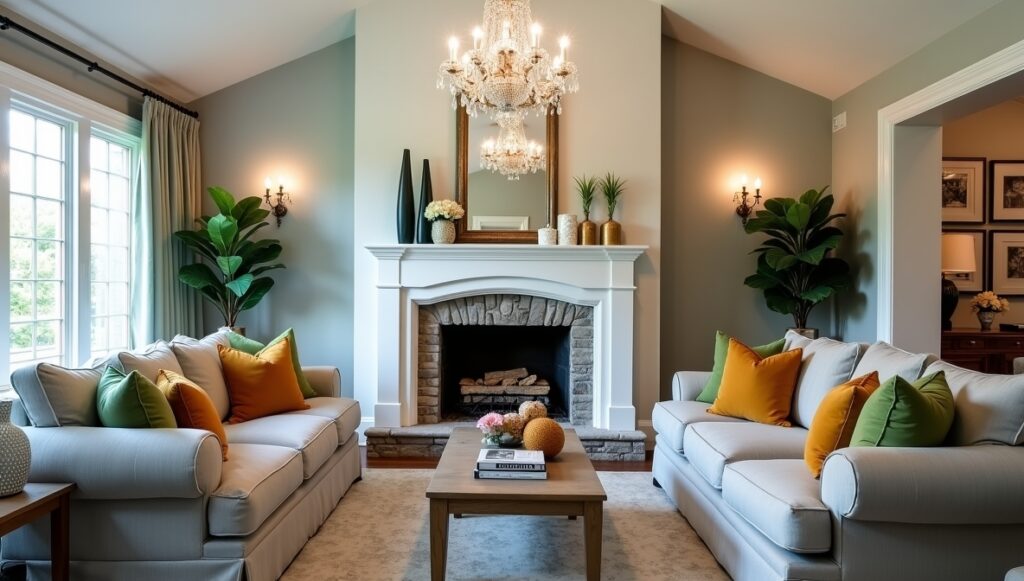
Balancing Warm and Cool Tones
Too many warm colors can feel overwhelming, while too many cool colors can feel cold. Balance them for a harmonious look.
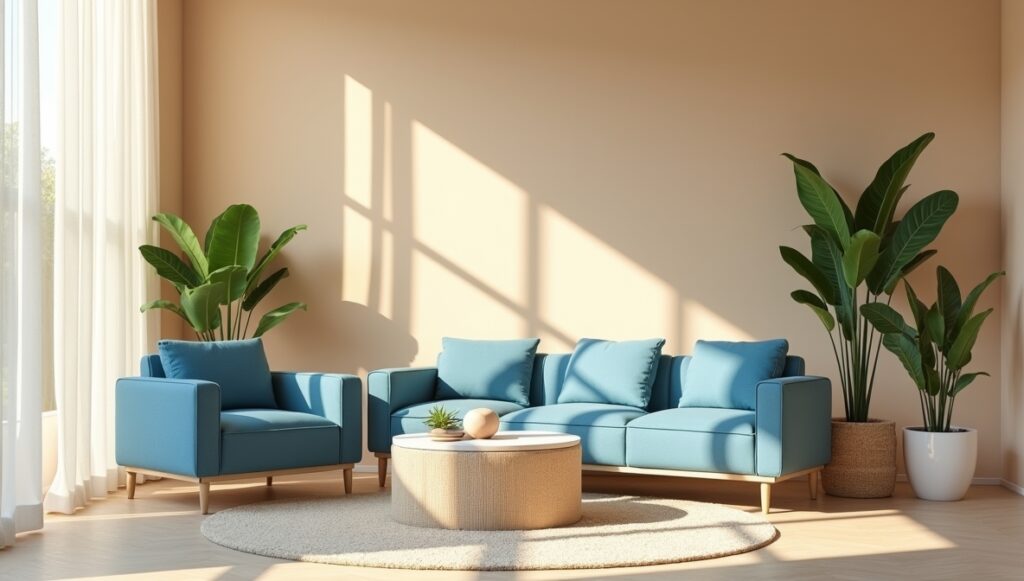
Final Thoughts
Choosing the perfect color palette for your home is all about understanding your space, your style, and how colors work together. By following this guide, you’ll be able to create a home that’s not only beautiful but also feels just right. Remember, there’s no “wrong” choice—just what works best for you. Happy decorating!

